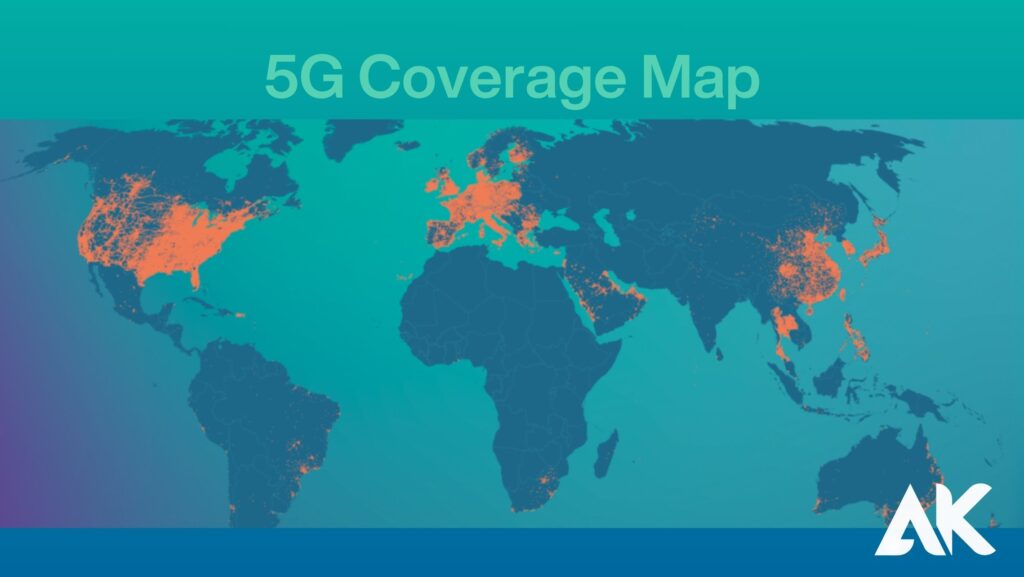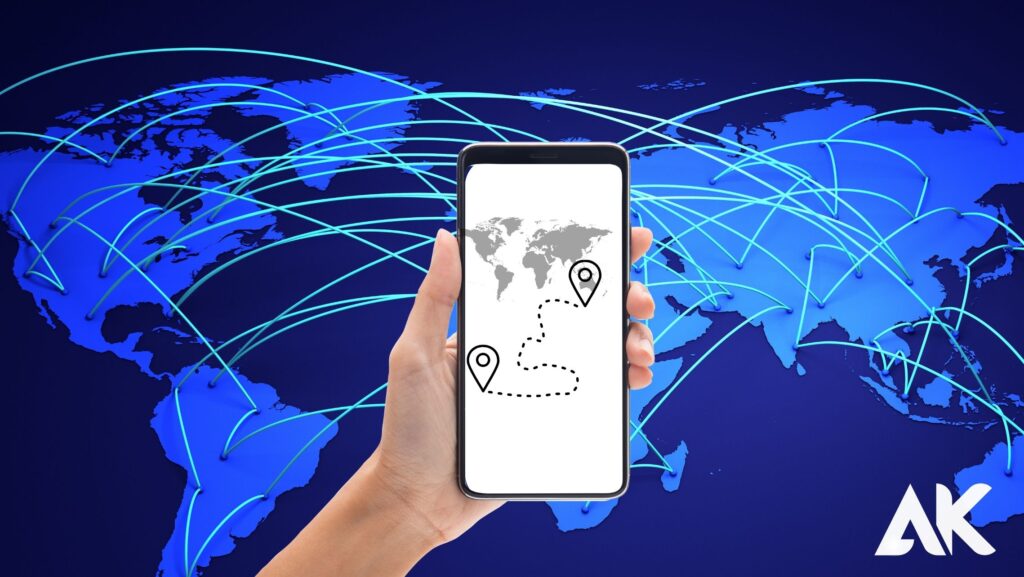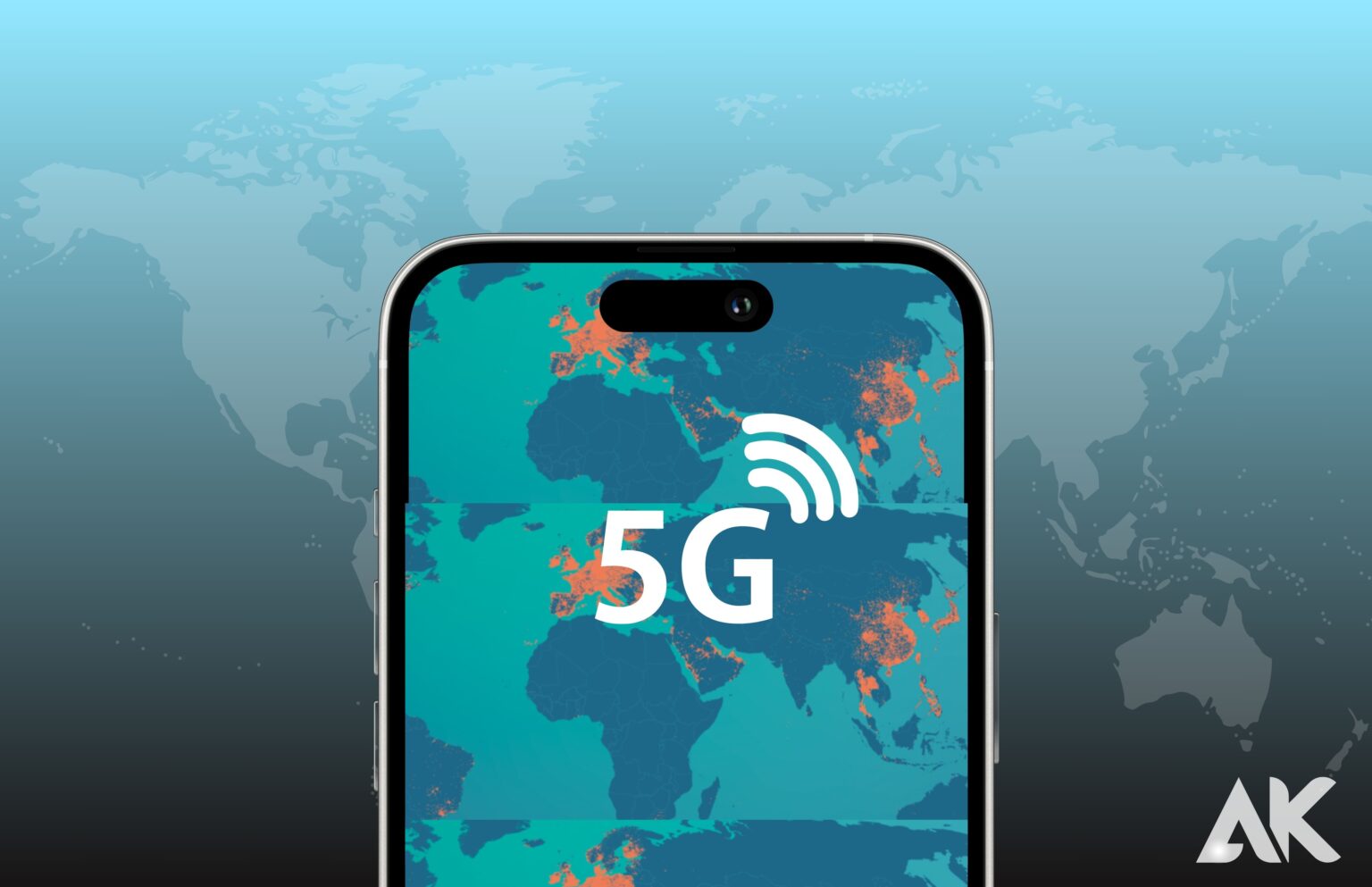Around the world, 5G technology is now being deployed in several locations. There are differences in 5G network availability by nation, locality, and even neighbourhood within a metropolis. We will explore the precise locations where 5G is currently accessible in this section.
United States:
As major telecom providers like Verizon, AT&T, T-Mobile, and Sprint compete to be the first to deliver statewide service, 5G coverage is fast increasing in the United States. Major cities with some 5G coverage currently include New York City, Los Angeles, Chicago, Houston, and Atlanta. It might not be accessible in every part of these cities, though. Furthermore, the 5G network rollout is still ongoing in smaller towns and rural regions.
Europe:
Several European nations have already started rolling out their initial 5G rollout phase. These include Switzerland, where the country’s biggest carrier, Swisscom, offers its customers countrywide coverage, and other significant cities like Geneva and Zurich, which have some degree of 5G availability. The UK (London), Germany (Berlin), Italy (Milan), Spain (Madrid), France (Paris), and Ireland (Dublin) are among the other nations with a sizable 5G presence. But much like in the US, this technology is still not available in rural regions.
Asia:
When it comes to the deployment of 5G networks, several Asian nations are ahead of other areas globally.
What is a 5G coverage map?

An illustration of the locations with a 5G cellular network connection is called a 5G coverage map. It assists consumers in determining if their area is covered by 5G services by displaying the scope and reach of 5G networks within a certain nation or region.
The need for higher internet speeds is growing, and as a result, telecom firms are constantly expanding their networks to cover more ground with 5G service. As a result, many service providers have issued various iterations of 5G coverage maps.
These maps show the availability and intensity of 5G signals in various locations using colour coding. Generally, yellow denotes moderate coverage, red denotes weak or no coverage, and green denotes good signal strength. Depending on the source or supplier of the map, these colours could change.
These maps are available to users on several platforms, including mobile applications, third-party websites tracking network coverage, and official websites of service providers. They can also be found in tangible materials that service providers provide, such as fliers and brochures.
The capacity of a 5G coverage map to show comprehensive details about the network infrastructure in certain areas is one of its primary features. This covers the locations of tiny cells, cell towers, and other hardware necessary to facilitate 5G signal transmission.
In addition to displaying the present service regions, some maps also depict the potential growth routes for towns or cities that will shortly be able to connect to 5G networks. With the help of this function, users may predict when their local region will get an improved connection.
How to Use a 5G Coverage Map

An illustration of the locations with 5G network signals is provided by a 5G coverage map. With the introduction of 5G technology, mobile users now need to be able to access a trustworthy and precise coverage map to ascertain where they can take advantage of the fast internet that this technology offers.
If you have upgraded your phone lately or want to upgrade soon, you should understand how to get the most out of a 5G coverage map. We’ll walk you through the process of using and maximising a 5G coverage map in this part.
1. Select a trustworthy source:
To use a 5G coverage map, locate a trustworthy source first. Numerous telecommunications corporations and independent websites provide interactive maps that indicate which locations are covered by 5G networks. Selecting a current and reliable source is crucial since network accessibility might change over time.
2. Become acquainted with the map:
After locating a trustworthy source, spend some time getting acquainted with the features and layout of the map. Different colours will be displayed on a typical 5G coverage map, with red denoting a strong signal, yellow denoting a moderate signal, and green denoting a poor signal. Additionally, you can notice symbols for mobile towers or other pertinent data.
3. Verify your address:
Check to see whether you currently have access to 5G before looking for availability elsewhere.
Conclusion
5G networks are being implemented in various regions worldwide, with the availability varying depending on the country, city, and specific locations within a city. In the US, major telecom companies like Verizon, AT&T, T-Mobile, and Sprint race to offer nationwide coverage, with major cities like New York City, Los Angeles, Chicago, Houston, and Atlanta having some level of 5G coverage. In Europe, several countries have already launched their initial phase of 5G deployment, including Switzerland, the UK, Germany, Italy, Spain, France, and Ireland. However, rural areas still lack access to this technology.
A 5G coverage map is a visual representation of the areas where 5G cellular network connectivity is available, helping users determine if their location is covered by 5G services. With the emergence of new technologies and increasing demand for faster internet speeds, telecommunications companies are continuously expanding their networks to provide 5G coverage to more locations. Users can access these maps through various platforms, mobile apps, or third-party websites dedicated to tracking network coverage.
To use a 5G coverage map effectively, users should choose a reliable source, familiarise themselves with the map, and check their location. This will help them determine the availability of 5G networks in different areas and ensure they can enjoy high-speed internet.
FAQS
How do I know that 5G is available in my area?
If you want to find out what network is available where you are, you may also download the OpenSignal application. The software may be downloaded on iOS and Android smartphones. It provides impartial maps of cell phone coverage for more than 35 nations. With OpenSignal, you can view a map customised to your location.
Where is 5G most available?
The US, China, and South Korea are the nations pioneering the development and implementation of 5G technology globally. Global telecom companies, such as AT&T Inc., KT Corp., and China Mobile, have been vying with one another to develop the fifth-generation (5G) of wireless technology.
What is the range of a 5G tower in KM?
1.6 to 5 kilometres
What is the 5G cell tower’s coverage area? A 5G cell tower’s low- and mid-band spectrum transmission range is 1 to 3 miles (1.6 to 5 kilometres). Mobile towers utilise a variety of 5G frequency bands, including 600 MHz, 700 MHz, 850 MHz, 2.5 GHz, 3.5 GHz (CBRS), and 3.7 GHz (C-band).

